Space
A new idea for creating Mars habitat
Published
1 year agoon
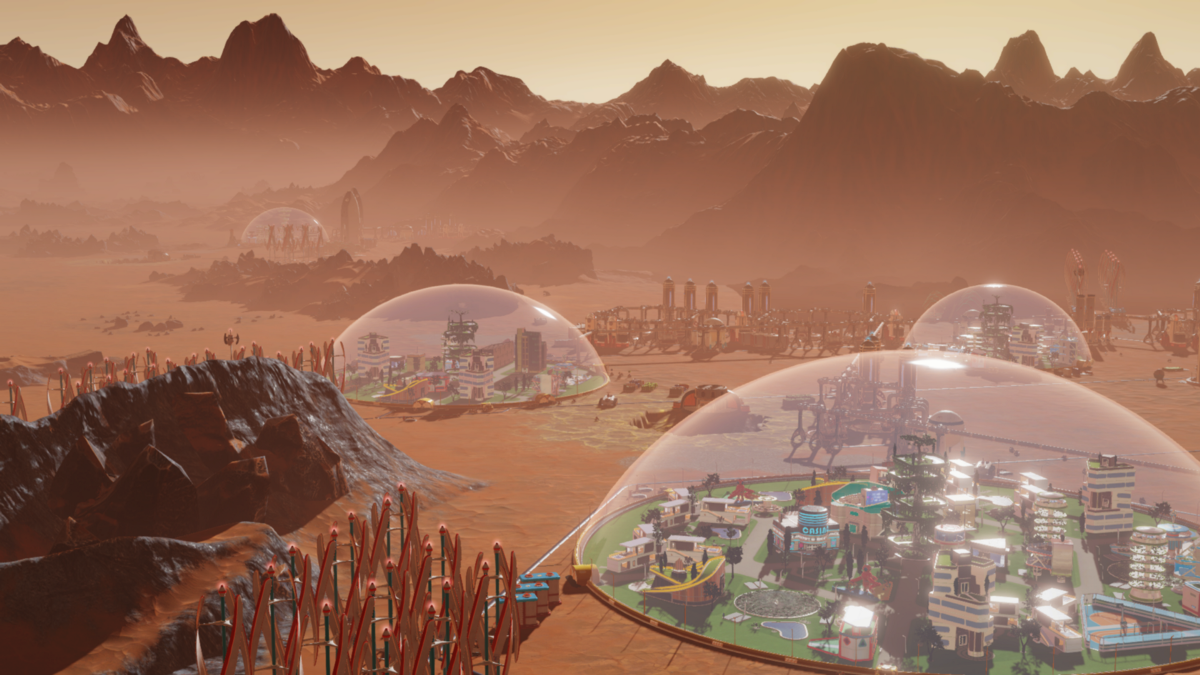

Creating a habitat or biological reserve on Mars by taking ideas from the habitats on Earth and the environmental mechanism governing our planet seems crazy. Still, not all experts have such an opinion, and some consider it practical.
Our population on planet earth has now reached 8 billion people. According to the United Nations, when the Earth’s population reaches its peak sometime around 2100, there will be 11 billion people on our planet. According to the World Wildlife Federation, our population growth is clashing with the natural world on a larger scale than ever before, and we are losing between 200 and 2,000 species each year.
Creating habitat on Mars


These propositions may seem to have nothing to do with the article’s subject, But the keyword of the mentioned sentences, which will be essential for us in this article, lies in “collision.” British engineering believes that one of the ways to reduce the damage caused by the collision between humans and nature is to create more habitats. We can do this by building a Terran ecosystem on Mars. In the continuation of the article, we will get to know more about this idea.
Paul L. In an article in the International Journal of Astrobiology, Smith, a civil engineer at the School of Engineering at the University of Bristol, UK, explains how we could build a nature reserve habitat on Mars and how such a reserve could serve as an Extraterrestrial Nature Reserve (ETNR). According to Smith’s ideas, the ETNR functions as both a psychological sanctuary and a botanical garden.
The idea of building a nature reserve habitat or something similar on the red planet may seem ridiculous at first glance. Still, we should remember that Smith is an engineer, and he thought about this issue during his career and explained it in his article.
Furthermore, Smith agrees on something other than the imminence or availability of ETNR on Mars. He has a long-term view, and his opinion is based on a fundamental assessment: humans will continue to put more pressure and damage on Earth, and we will continue to colonize Mars.
By confirming this premise, Smith argues that ETNRs should be considered a necessary and efficient part of any colonization effort on Mars. Smith isn’t the first to think of this idea, and he draws on many previous research in his thoughts.
Maybe it is better to pay attention and evaluate the “possibility” of doing it on Mars before discussing whether it is “wise” for creating a mars habitat. When we focus on the possibility of doing extensive technical work, who can do it better than an engineer?
The length of the Martian day is similar to the day on Earth, and this fundamental issue may remove many obstacles. In addition, Mars is much colder than Earth; But currently, there are systems to maintain and preserve the enclosed spherical sanctuary; Therefore, the temperature can be managed without much complexity. Another critical point is about the dry surface of Mars; however, there is plenty of frozen water beneath the Red Planet’s surface. From this, we can conclude that the water supply problem will be solvable.
The atmospheric compositions of Mars and Earth are very different; However, compared to other cases, this challenge is probably considered a simple and manageable issue. By relying on the science of physics and existing technologies, a closed environment can be engineered to reach the desired atmosphere for the implementation of the project. The presence of plant life can regulate the background to some extent. Besides these, temperature and pressure will be the two most specific factors to adjust or change by human hands.
Everything mentioned in the above paragraphs for creating a mars habitat was the basic principles, and maybe you are familiar with parts of it or have read about it. Still, when it comes to more detailed analysis, more confusing and complex issues will gradually show themselves. In Smith’s research, this part of the challenges has been discussed in detail.
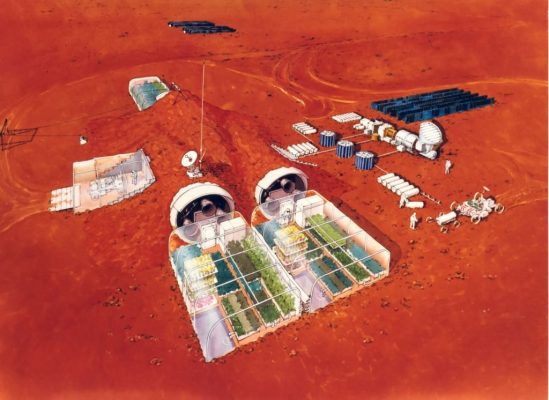

We could consider the radiation environment of Mars as the starting point of complications. Without a layer like the ozone layer on Mars, the Red Planet’s surface would be exposed to dangerous levels of ionizing UV radiation. Smith writes:
Due to the thin atmosphere and the lack of a suitable ozone layer, the harsh ultraviolet flux on the surface of Mars makes the Earth infertile. Some amount of UV radiation is desirable and forms part of the metabolism of some living organisms. Humans need some ultraviolet rays to stimulate the production of vitamin D. Still, various terrestrial life forms are incompatible with the increase of ultraviolet radiation and need adequate protection against these radiations.
Smith adds:
Fortunately, glass-plastic composites can block harmful wavelengths from entering, allowing beneficial UV and visible light to pass through. Therefore, the UV flux in the CTTE (Terran-Contained Terran Ecosystem) is restrained.
Magnetic fields are a broader issue. We know that the magnetic field protects the planet from cosmic rays and prevents the destruction of the ozone layer by the solar wind. However, we need a complete understanding of the mechanisms behind the operation of the Earth’s magnetic fields. Some organisms use the Earth’s magnetic field to migrate and move in different directions.
Read more : Jupiter planet, all moons and specifications
Some scientists refer to the correct and complete understanding of the Earth’s magnetic fields as “the greatest mystery in animal biology.” Naturally, we all agree on the need to understand such a mystery better, But can we engineer an artificial magnetic field in CTTE with current knowledge? Life on Earth also changes with the change of seasons. The structure of the biome changes and this must be managed. Seasonal variation on Mars is very different from Earth; Therefore, seasons must be engineered. Smith explains:
Timing determines the critical stages of the development of individual physiologies and interspecies relationships. Meanwhile, the timing of non-living events affects the global nutrient flux.
Smith further mentions that photoperiod and winter cold play a role in the phenology of temperate plants. Phenology includes things like budding and bud break and flowering in plants. Also, more complex behaviors of animals, such as migration, breeding, and egg-laying, are included in this category. These behaviors are coordinated in nature, between individuals, and between different species. Repeating them will be a big issue.
Mars life is intricately linked to the changing seasons
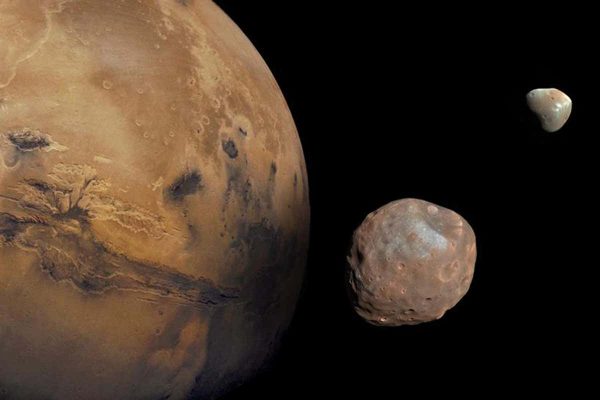

Humans do not reproduce seasonally; But we are also not separated from the seasons, and this dependence increases, especially in temperate regions. Seasons also have vital features for psychological regeneration.
Phenomena such as autumn color, winter silence, spring flowers, and summer leaves may seem simple, But they are necessary and efficient. Another difference between Mars and Earth that may need to be noticed in some analyzes is the lunar cycles. Earth’s moon is vast and has a great influence on our planet. Phobos (the smaller moon) and Deimos are the two potato-shaped moons of Mars and have almost no influence on Mars.
Even if Mars is full of life and organisms and oceans, the fact is that those two small rocks cannot create tides on the surface of Martian waters. There may be areas on Mars where these two moons are never visible. Smith describes Earth’s moon as a “Zitgeber.” Zeitgeber is a natural and rhythmic phenomenon that acts as a sign of regulating the body’s circadian rhythms. The length of the Mars day is similar to that of the Earth; Therefore, perhaps daily rhythms are not difficult.
Mars receives only 43% of the amount of sunlight received by Earth. Research shows that this amount of the sun would be enough for photosynthesis on the Red Planet, But the growth rate of plants on Mars will only match the same rate on Earth with artificial augmentation. This issue is another obstacle that can be overcome with engineering and technology, But the problems related to that will eventually make ETNR more complicated.
Smith talks about putting natural preserves in underground lava tubes and believes such an idea would protect against ultraviolet rays and other benefits. In these cases, artificial light reinforcement is also needed. We must not forget that the ETNR complex also needs soil. Mars has a basaltic crust rich in many nutrients necessary for plants. Smith writes while referring to the research of other scientists.
Martian storms sometimes become very big and violent due to the geographical extent of their influence
Based on the research, some of these cases can be repeated in the rocky cover of Mars; However, these researches have been conducted on soil made from Mars and on Earth. How confident can we be that we can build a complete soil system on Mars?
Martian rock also contains higher levels of toxins compared to Earth’s soil. There are higher levels of perchlorate on Mars, making the rocky planet a toxic environment for various life forms. Also, there are much more iron oxides in Martian rock, and when combined with increased levels of perchlorate and hydrogen peroxide, it will create a very toxic product.
Can remedial action be taken against it? The answer is probably yes. Making soil from scratch is one of the critical components in creating ETNR and will be among the complex issues in this path.
Soils derived from basalt with volcanic ash are fertile agricultural soils. Crushed basalt can increase soil pH, While its dissolution causes the release of useful nutrients, including phosphorus. Phosphorus is one of plants’ three main nutrients to grow: nitrogen, phosphorus, and potassium.
There is probably enough nitrogen in the Martian soil to grow plants, But the fact is that it is not only nitrogen; plants also need 16 other micronutrients for Creating mars habitat . According to Smith, these are all reported from Martian or Martian meteorites; But other chemicals are effective in soil fertility that plants do not directly consume. This is a complicated puzzle.
Earth’s soil not only contains all the nutrients plants need but is also full of microbes and organisms such as earthworms. These organisms are part of the living system in the Earth’s soil. The question is, does the whole system need to be rebuilt? If so, that should be considered an extraordinary level of sophistication.
Martian storms sometimes become very big and violent due to the geographical extent of their influence
Based on the research, some of these cases can be repeated in the rocky cover of Mars; However, these researches have been conducted on soil made from the soil of Mars and on Earth. How confident can we be that we can build a complete soil system on Mars?
Read more : Mars colonizing by SpaceX company
The lower gravity of Mars must also be taken into account for creating a mars habitat. The gravity of Mars is only 38% of the gravity of Earth. Gravity is one of the factors that regulate the growth of plants. As an example of gravity-related issues, could a spindly evergreen tree grow in the reduced gravity of Mars? Smith writes about this:
Based on experiments, a gravitational acceleration equal to 0.3g (this value is less than the gravitational acceleration of Mars) would be enough to trigger gravitational responses. Still, this meristem (segmental) ability can be destroyed by gravity like the moon’s gravity (approximately equivalent to 0.17g).
Gravitational responses are the response of plant life to gravity and work in two ways. Charles Darwin showed that plant roots exhibit positive attraction; they grow toward the center of gravity. This is while the stems do the opposite. Research shows that plants can grow and photosynthesize in microgravity.
Martian rock also contains higher levels of toxins compared to Earth’s soil. There are higher levels of perchlorate on Mars, making the rocky planet a toxic environment for various life forms. Also, there are much more iron oxides in Martian rock, and when combined with increased levels of perchlorate and hydrogen peroxide, it will create a very toxic product.
Can remedial action be taken against it for creating a mars habitat? The answer is probably yes. Making soil from scratch is one of the critical components in creating ETNR and will be among the complex issues in this path.
Martian dust storms also play their role in the equations. Some Martian rocks are so fine that storms blow them up. The magnitude of these storms in terms of the area of influence is sometimes equal to the size of the United States. These layers accumulate on surfaces and cause problems for solar panels deployed on Mars landers. These storms also reduce the amount of solar energy reaching the surface and create more difficulty and pressure for photosynthesis.
Via: Universetoday


You may like
-




How to prevent the earth from being baked by the scorching sun?
-




James Webb space telescope map of the climate of an exoplanet
-

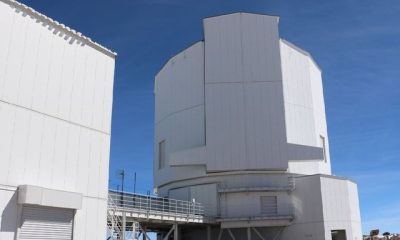


The highest observatory in the world officially started its work
-

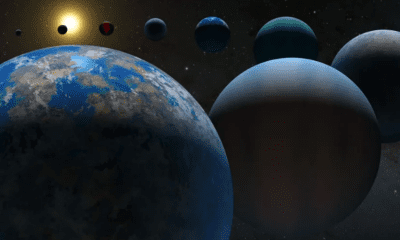


What is an exoplanet? Everything you need to know
-

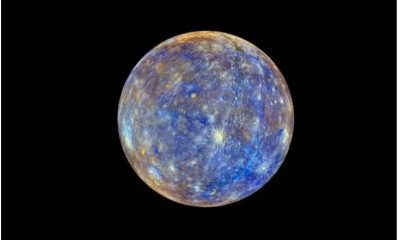


Seven surprising discoveries about the planet Mercury
-




Why there is no gaseous moon in solar system?
Space
How to prevent the earth from being baked by the scorching sun?
Published
3 hours agoon
05/05/2024

How to prevent the earth from being baked by the scorching sun?
One day, the sun will enter a stage where life on Earth will no longer be possible and our planet will simply turn into a mass of iron and nickel. The good news is that if we do our best, we can keep our home livable even after the sun gets too hot.
Waking nightmare
The Sun will gradually become brutally brighter, hotter, and larger over time. Billions of years ago, the Sun was 20 percent dimmer than it is today when a series of molecules danced together to form living things. At that time, even the dinosaurs faced a fainter and smaller star.
Today, the sun is halfway through its hydrogen life and is still 4 billion years away from entering the death phase. However, in the next few hundred million years, the temperature and brightness that is giving life to our planet today will lead to its destruction. A few hundred million years is like a blink of an eye on a cosmic scale.
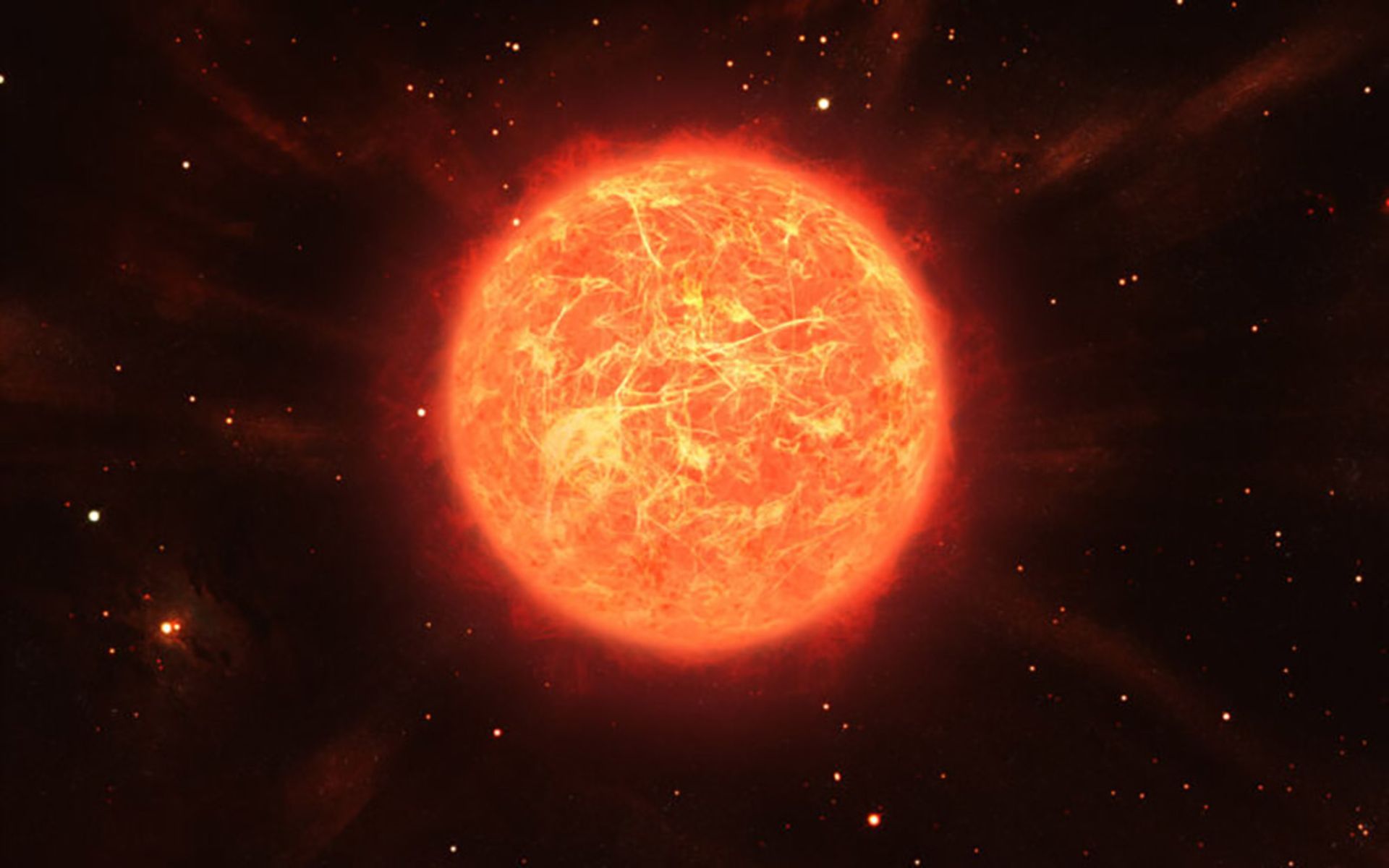 The sun is getting bigger and brighter day by day.
The sun is getting bigger and brighter day by day.
The sun sows the seeds of its destruction based on its fundamental physical properties. In the current conditions, our star consumes 600 million tons of hydrogen every second; So the atoms collide with each other in a nuclear inferno with a temperature of more than 15 million degrees Celsius. Of these 600 million tons, 4 million tons of hydrogen are converted into energy, which is enough to light up the entire solar system.
The fusion reaction is not completely clean and the resulting product is helium. Helium has nowhere to go because the deep convective cycles that continuously churn up the material inside the Sun do not reach the core, where helium is formed; Therefore, helium remains there in an unused, motionless, and stagnant form.
The sun consumes 600 million tons of hydrogen every second
At the present time, the Sun has not reached the high temperature and pressure in its core for helium fusion; So the helium stays there, increasing the overall mass of the nucleus without giving it anything else to fuse with. Fortunately, the sun can compensate for this process through hydrostatic balance.
The Sun is in constant equilibrium on the edge of a nuclear knife. On the one hand, energy is released from the fusion process, which, if left unchecked, can cause the sun to explode or at least expand. In front of this force, there is the gravitational weight of the sun, which exerts an inward force. If this force is released, the sun’s gravity will cause it to collapse and turn it into a black hole the size of an average city.
So what happens when an unstoppable force meets an irresistible force? A pleasant balance is established and the sun can continue to exist for billions of years. If for any reason the temperature of the inner nuclear inferno increases randomly, other parts of the star will also heat up and its outer layers will swell. In this way, the gravitational pressure decreases and the nuclear reactions slow down. If the Sun randomly contracts, more material will force itself into the core, where it will participate in the nuclear dance. The energy released as a result of this event causes the star to re-inflate to normal proportions.
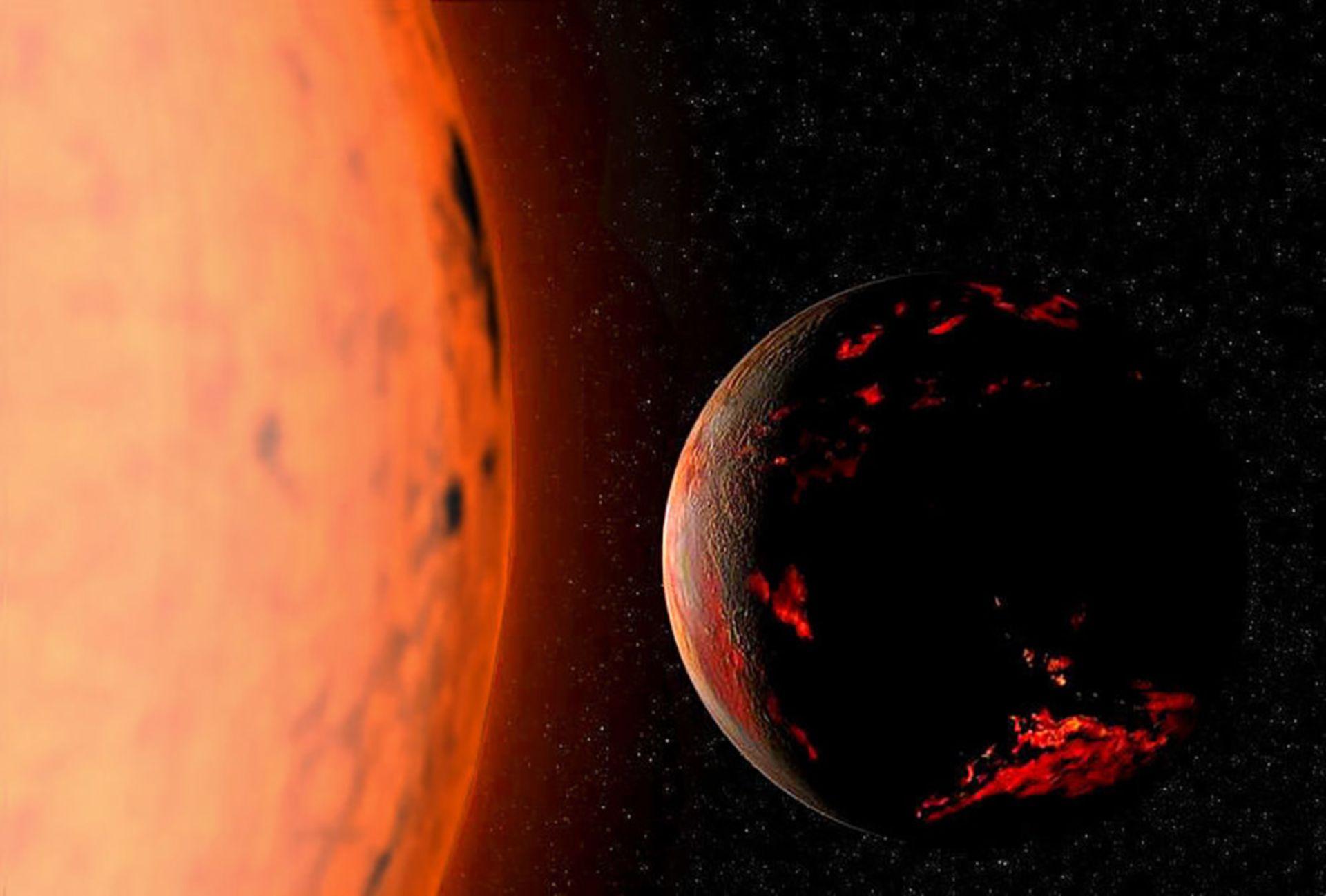 The sun will destroy the earth before it dies.
The sun will destroy the earth before it dies.
On the other hand, helium, which is a nuclear product, replaces hydrogen and disturbs the balance. In this state, the sun has no choice but to pull internally, because gravity is unyielding. Meanwhile, nuclear reactions intensify and increase the temperature, which eventually causes the sun’s surface to glow and expand.
Slowly, as helium continues to accumulate in the core of the Sun, or any star of similar mass, the Sun grows larger and brighter in response to this process. It is difficult to predict exactly when this glow will become catastrophic for the Earth, this issue is strongly related to the relationship between the rays, the atmosphere, and the ocean; But the general estimate is that we have about 500 million years before life on Earth becomes impossible.
The burning sun will increase the temperature of the earth’s surface. It evaporates at higher ocean temperatures. Since water vapor is an important greenhouse gas, a large part of it remaining in the Earth’s atmosphere leads to higher surface temperatures. Higher temperatures lead to more evaporation of the oceans, setting the stage for the greenhouse cycle. Finally, we will witness the escape of a large part of the earth’s waters into the atmosphere.
Without water to lubricate tectonic activity, tectonic plates stop moving. Without tectonic activity to pull carbon out of Earth’s atmosphere, the planet’s air density would increase dramatically. As a result, in a few hundred million years, we will become Venus, the twin planet of Earth, which experienced the same fate billions of years ago; Two dead worlds in the hands of their parent star.
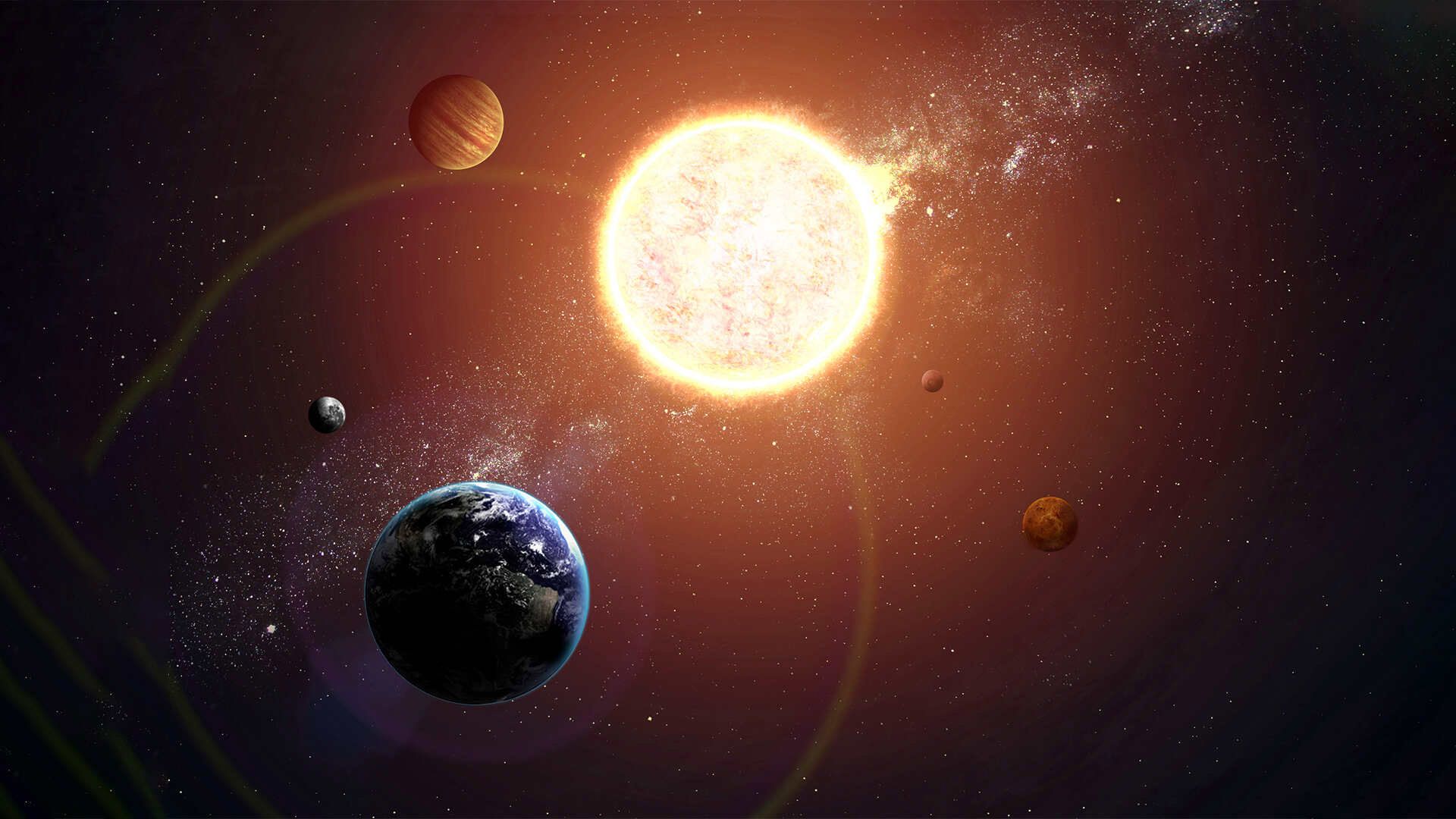 By shifting the earth’s orbit, it can be saved from the sun.
By shifting the earth’s orbit, it can be saved from the sun.
Change the position of the planet
The habitable zone is the region around a star where the temperature is suitable for the flow of liquid water on the surface of a planet. Temperatures near the star are too high to prevent any atmospheric complexity so that water exists only as vapor. Outside this range, the temperature is very low.
Earth is now roughly in the middle of the Sun’s life belt, Venus is on the inner edge, and Mars is almost outside. As the age of the sun increases and its brightness increases, the life belt will reach more distant parts of the solar system; So if we want the Earth to survive this process, we have to move it.
Moving a planet will not be an easy task; But fortunately, we are dealing with vast astronomical time scales and we don’t need to move the earth today. In fact, we have hundreds of millions of years to plan this transition. To do this, we can use the same stabilizing force that keeps the planets in orbit around the sun, and that force is nothing but gravity.
The first thing we need to do is find an energy source. Raising the earth’s orbit requires a lot of energy, and this energy has to be supplied from somewhere. Fortunately, we can use the planet Jupiter. Since this gaseous world is 318 times heavier than Earth, its simple movement through the sky provides a surprising amount of kinetic energy, and a small amount can be borrowed.
We are almost 500 million years away from the destruction of the earth by the sun
Jupiter’s energy can be transferred to Earth through orbital interactions. To better understand this issue, suppose you are standing inside a wheeled platform on a railway track and a train is moving towards you. You can’t step out of the way of a train (because then the analogy wouldn’t be fun); So your only chance to survive is to move at least as fast as the train. Of course, if you simply let the train hit the counter, then your speed will match the speed of the train, but not in the way you’d expect.
Instead, you can reach into your pocket and pull out a bouncing meatball. Suppose, this ball is durable and indestructible. You throw the ball at the train. The ball hits the train and bounces back. Then you grab it and move forward a bit. With just a little practice, and through simple conservation of momentum, you’ll find that you can steal some of the train’s energy and give it to yourself and the rolling platform. The train barely notices these collisions, but you do. If you get enough power you can move on without facing disaster.
Now let’s return to the example of Earth and Jupiter. The above analogy is suitable for preventing Jupiter from colliding with our planet, except we use asteroids instead of bouncing balls. We can send asteroids on long orbits around Jupiter. In this scenario, the gravitational interaction between the planet Jupiter and the asteroid leads to an increase in the speed of the asteroid and, in turn, a slight decrease in the speed of the giant Jupiter. Then we can bring the asteroid back to Earth, rotate it in the opposite direction, and achieve the desired force by slowing down its motion.
Running the above process once doesn’t have much effect; So we have to repeat it for hundreds of millions of years so that the Earth can reach higher orbits and thus escape from the wrath of the sun. If our descendants can control this process, they can move the Earth into a safe zone of the habitable zone.
 The Sun loses mass through the solar wind or particle stream.
The Sun loses mass through the solar wind or particle stream.
Star setting
If you are not interested in changing the arrangement of the planets, but have the ability for super-engineering projects, we have another solution for you. The main problem with the sun is that helium is a natural product of our star’s fusion process. The hydrogen fusion ratio is defined based on the total mass of the Sun; The bigger a star is, the faster it burns, and in the same way, smaller stars burn at a slower rate; Therefore, if we want to limit the amount of helium production, we must slow down the fusion reactions. The easiest way is to reduce the total mass of the Sun.
Fortunately, the sun is naturally decelerating, but not fast enough. The surface of the Sun continuously emits an endless stream of tiny charged particles, which we call the solar wind. In terms of human-scale statistics, the amount of mass that the Sun loses through the solar wind is 1 to 2 million tons per second, which is an incredibly high rate; But this speed should be increased a little.
The Sun loses one to two million tons of mass every second through the solar wind
One way to speed up the mass loss of the Sun is to heat its surface with lasers or special rays, strong magnetic fields, or whatever mechanism our descendants choose. Heating the surface of the sun leads to an increase in the production of solar winds, and thus the speed of the sun’s mass loss increases; But high-energy particles that are released at high speed are not suitable for habitability on Earth, so they must be transported to a safe place.
One way to control the solar wind is to build a series of particle accelerator stations in orbit around the Sun’s equator. These stations continuously exchange charged particles and create a loop of current in the shape of the solar belt. This current loop creates a torus (donut-shaped) magnetic field that can transform the solar wind into polar outflows in the direction of the sun’s rotation axis and safely remove harmful particles from our planet.
The torus magnetic field can be used to compress the star. According to this method, first, the stations are turned off and thus the particles fall into the sun. Then, by turning on the stations, the magnetic field is interrupted and the falling process is reversed. The magnetic field surrounding the sun’s equator is compressed, forcing particles to be repelled from the sun’s poles.
If our descendants are advanced, they can capture the elusive solar wind and use it for other purposes, such as fusion reactor systems to power an entire facility, and if they are creative, they can direct the outflow of the solar wind in one direction and use it as a booster rocket. use solar to guide the solar system to new points in the Milky Way or even outside the galaxy.
Of course, the technique of moving the star reduces the brightness of the sun; Because despite the lower mass, the fusion reactions take place in a quieter atmosphere, which reduces the power and dimensions of our star. In this way, the life belt moves to an inner part. We may not realize this at first, because the things we do are in opposition to the natural tendency of the life belt to move outward; But eventually, after the Sun has lost 10-20% of its mass, we have to move the Earth to the inner part of the life belt to keep it in the right spot.
In the end, we are left with a smaller, long-lived star. The smallest red dwarfs with a mass of a little more than one-tenth of the Sun can live for trillions of years; But at the same time, it has a more chaotic nature, because due to their low mass, they are subject to stellar explosions that periodically double their brightness. If our descendants want to take this path to increase the life of the sun, they must definitely prevent these explosions.
All in all, if humanity can survive for billions of years, it will probably become an interplanetary or interstellar entity. In this situation, there will be no need to save the land. Perhaps our distant descendants can preserve the land from which they sprang as a mark of respect. Perhaps this is necessary because no other world is as suitable for life as Earth. Ultimately, perhaps, it is an art project, an opportunity to create beauty and wonder on an interplanetary scale, before the fires of nuclear fusion die out and our star breathes its last. The last chapter of the story ends the billions of years of life of the solar system.
Space
James Webb space telescope map of the climate of an exoplanet
Published
3 days agoon
02/05/2024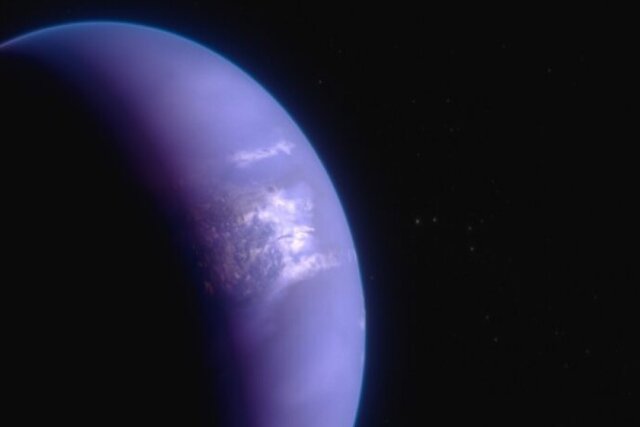

The James Webb Space Telescope helped researchers map the climate of an exoplanet.
James Webb space telescope map of the climate of an exoplanet
An international team of researchers has successfully used the James Webb Space Telescope to map the climate of a hot gas giant exoplanet.
According to NASA, detailed observations in a wide range of mid-infrared light, along with 3D weather models and previous observations from other telescopes, show the presence of dense, high clouds that cover the sky during the day and night, as well as show tropical winds. They say they are merging atmospheric gases at 5,000 miles per hour around the exoplanet WASP-43 b.
This is the latest demonstration of exoplanet science, now made possible by James Webb’s extraordinary ability to probe temperature changes and detect atmospheric gases trillions of miles away.
The exoplanet WASP-43 b is a type of “Hot Jupiter”. This Jupiter-sized planet is made mostly of hydrogen and helium and is much hotter than the other giant planets in the solar system. Although its star is smaller and cooler than the Sun, WASP-43 b orbits at a distance of 1.3 million miles, less than one-twenty-fifth the distance between Mercury and the Sun.
With such an orbit, the planet is tidally locked; This means that one side is constantly lit and the other side is in permanent darkness. Although the night side never receives any direct radiation from the star, strong eastward winds carry heat from the day side around.
Since the discovery of the planet WASP-43 b in 2011, it has been observed by several telescopes, including the Hubble Space Telescope and the Spitzer Space Telescope. “With the Hubble Space Telescope, we can clearly see that there is water vapor on the day side of the planet,” said Bay Area Environmental Research Institute (BAERI) researcher Taylor Bell. Both Hubble and Spitzer showed that clouds may exist on the night side, but we needed more detailed surveys with the James Webb Space Telescope to begin mapping temperatures, cloud cover, winds, and atmospheric composition more precisely across the planet.
Although WASP-43 b is too small, faint, and too close to its star to be seen directly by a telescope, the planet’s short orbital period of just 19.5 hours makes it ideal for “phase curve spectroscopy.” The phase curve spectroscopic method involves examining small changes in the brightness of a star-planet system as the planet orbits the star.
Because the amount of mid-infrared light emitted by a body depends largely on how hot it is, James Webb’s brightness data can be used to calculate a planet’s temperature.
For more than 24 hours, the research team used James Webb’s Mid-Infrared Instrument (MIRI) to measure the light of the WASP-43 system every 10 seconds. “By observing an entire orbit, we were able to calculate the temperature of different sides of the planet as it rotated into view,” Bell explained. Based on these calculations, we were able to create a map of the temperature of the entire planet.
Measurements show that the air temperature on the day side of the planet is close to 1250 degrees Celsius on average; While the temperature of the night side reaches 600 degrees Celsius and is significantly cooler. These data help locate the hottest spot on the planet, which is slightly eastward from the point receiving the most stellar radiation. This change occurs due to the blowing of winds that move the warm air towards the east.
“Michael Roman” (University of Leicester) researcher and one of the researchers of this project said: “The fact that we can map the temperature in this way is a real proof of James Webb’s sensitivity and stability.”
To interpret the map, the researchers used complex 3D atmospheric models, similar to those used to understand weather and climate on Earth. Analyzes show that the night side of the planet is probably covered in a dense and high layer of clouds, and this layer prevents part of the infrared light from reaching space. As a result, although the night side is very warm, it appears dimmer and cooler than when there are no clouds.
The broad spectrum of mid-infrared light taken by James Webb makes it possible to measure the amount of water vapor and methane around the planet. “Joanna Barstow”, a researcher at “The Open University of UK” and one of the researchers of this project, said: “James Webb has given us the opportunity to find out exactly which molecules we see and put limits on their abundance.”
The observed light spectra show clear signatures of water vapor on the planet’s nightside and dayside, providing additional information about the density of clouds and their height in the atmosphere.
Read more: The highest observatory in the world officially started its work
Also, the researchers were surprised to find that the data showed a lack of methane everywhere in the atmosphere. Because the day is too hot for methane to exist, methane should be cooler, stable, and detectable at night.
“The fact that we don’t see methane tells us that the wind speed on WASP-43 b must be about 5,000 miles per hour,” Barstow explained. If the winds move the gas from the day side to the night side of the planet and back again quickly, there won’t be enough time for the chemical reactions to produce detectable amounts of methane on the night side.
Researchers believe that because of this wind-driven mixing, the chemistry of the atmosphere is the same across the planet. This result was not clear in previous researches that were conducted with Hubble and Spitzer telescopes.
This research was published in “Nature Astronomy” magazine.
Space
The highest observatory in the world officially started its work
Published
4 days agoon
01/05/2024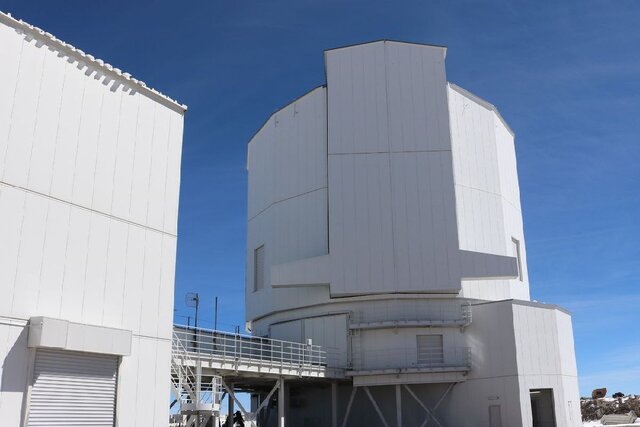

The Tokyo Atacama University Observatory, which has the title of the highest observatory in the world, is now ready for work.
The highest observatory in the world officially started its work
A new telescope, which is introduced as the highest observatory in the world, has been officially opened.
Tokyo Atacama University Observatory (TAO), which was first designed 26 years ago to study the evolution of galaxies and exoplanets, is located on top of a high mountain in the Chilean Andes at an altitude of 5,640 meters above sea level. . The height of this telescope even exceeds the “Atacama Large Millimeter Array” (ALMA), which is located at an altitude of 5050 meters.
The TAO observatory is located in a region where the high altitude, sparse atmosphere, and perpetually dry weather are deadly for humans, but it is an excellent spot for infrared telescopes like TAO because their observational accuracy relies on low humidity levels that keep the Earth’s atmosphere at wavelengths. Infrared makes it transparent.
Yuzuru Yoshii, a professor at the University of Tokyo (UTokyo), said: “Building a telescope on the top of the mountain was an incredible challenge, not only from a technical point of view but also from a political point of view.” I communicated with the indigenous people to ensure their rights and views were taken into account, with the Chilean government to obtain permits, with local universities for technical cooperation, and even with the Chilean Ministry of Health to ensure that people could climb safely at that altitude. to work
He added: The research that I have always dreamed of doing, thanks to everyone involved, will soon become a reality and I could not be happier.
The 6.5-meter TAO telescope has two science instruments designed to observe the world in infrared light. One such instrument, called SWIMS, will image galaxies in the early universe to understand how they formed from the merger of dust and pristine gas. Despite decades of research, the details of this process remain obscure. The second device, MIMIZUKU, will contribute to the mission’s overall goal by studying the primordial dust disks from which stars and galaxies formed.
Riko Senoo, a student at the University of Tokyo and a researcher on the TAO project, said: “The better astronomical observations of the real object, the more accurately we can reproduce what we see with our experiments on Earth.”
Masahiro Konishi, a researcher at the University of Tokyo, said: “I hope that the next generation of astronomers will use TAO and other ground-based and space-based telescopes to make unexpected discoveries that challenge our current understanding and provide the unexplained.”
Read more: Why there is no gaseous moon in solar system?
Before the newly opened telescope was built, Yoshi and his colleagues in 2009 also assembled a 1-meter telescope on top of Mt. This small telescope called “miniTAO” imaged the center of the Milky Way galaxy. Two years later, miniTAO received the Guinness World Record for being the highest astronomical observatory on Earth.
Although the observatory has been the talk of the town for the past 26 years, work on its construction site began in 2006. At that time, the first road to reach the summit was paved, and shortly after, a weather monitoring system was installed there.


How to prevent the earth from being baked by the scorching sun?


James Webb space telescope map of the climate of an exoplanet


The highest observatory in the world officially started its work


Many mental disorders have physical roots


How to connect to the TV with a Samsung phone?


The secret of the cleanest air on earth has been discovered


Asus Zenbook 14 OLED laptop review


How extinct animals could be brought back from death?


Xiaomi Pad 6S Pro review


How can solar storms destroy satellites so easily?
Popular
-



 Technology9 months ago
Technology9 months agoWho has checked our Whatsapp profile viewed my Whatsapp August 2023
-



 Technology10 months ago
Technology10 months agoHow to use ChatGPT on Android and iOS
-



 Technology9 months ago
Technology9 months agoSecond WhatsApp , how to install and download dual WhatsApp August 2023
-



 Technology11 months ago
Technology11 months agoThe best Android tablets 2023, buying guide
-



 Humans1 year ago
Humans1 year agoCell Rover analyzes the inside of cells without destroying them
-



 AI1 year ago
AI1 year agoUber replaces human drivers with robots
-



 Technology10 months ago
Technology10 months agoThe best photography cameras 2023, buying guide and price
-



 Technology11 months ago
Technology11 months agoHow to prevent automatic download of applications on Samsung phones
